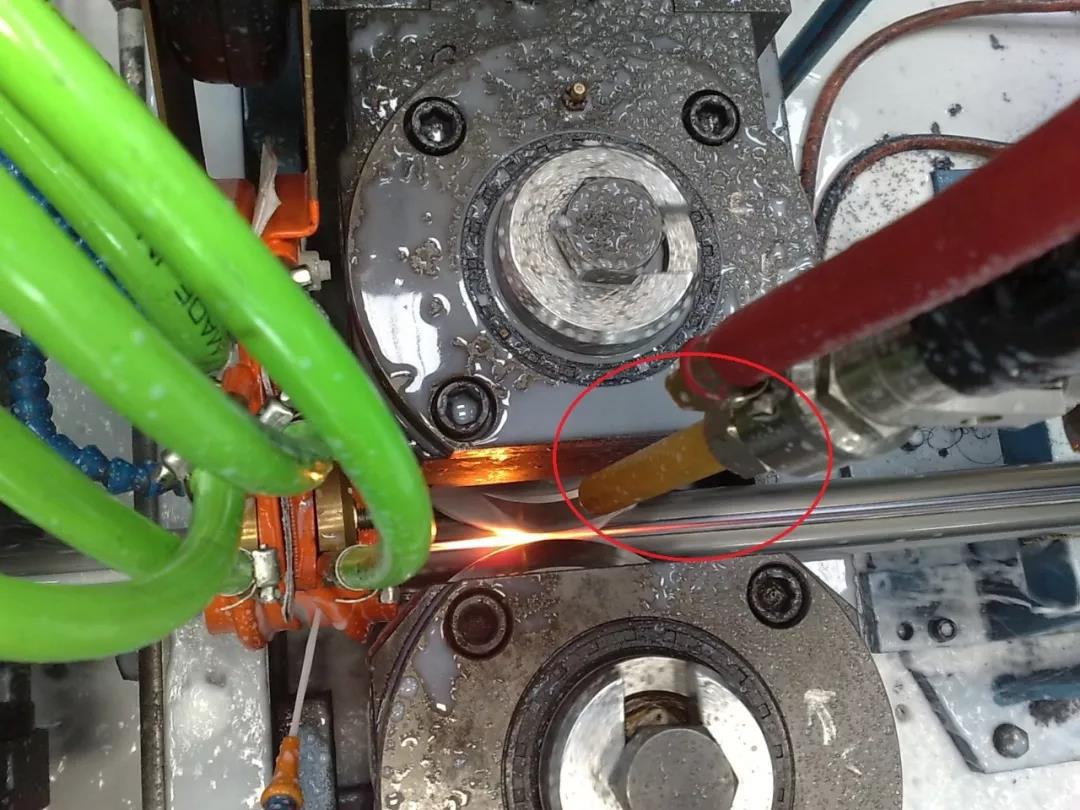Weld quality failure caused by used welded pipe units (3)
- Sort:Information
- Auth:
- Source:
- Release time:2022-03-05 11:30
- Pvs:
【概要描述】When manufacturing welded pipes for used welded pipe units, judging that the quality of the welded pipes meets the standard depends on the quality of the welds. Therefore, the quality of the weld is very important, so sometimes it is necessary to rule out the quality of the weld. We perform analyses to understand weld quality failures.
Weld quality failure caused by used welded pipe units (3)
【概要描述】When manufacturing welded pipes for used welded pipe units, judging that the quality of the welded pipes meets the standard depends on the quality of the welds. Therefore, the quality of the weld is very important, so sometimes it is necessary to rule out the quality of the weld. We perform analyses to understand weld quality failures.
- Sort:Information
- Auth:
- Source:
- Release time:2022-03-05 11:30
- Pvs:
When manufacturing welded pipes for used welded pipe units, judging that the quality of the welded pipes meets the standard depends on the quality of the welds. Therefore, the quality of the weld is very important, so sometimes it is necessary to rule out the quality of the weld. We perform analyses to understand weld quality failures.
These weld quality failures will occur when the used welded pipe units is making pipes: ① through-length lap welding. ② Periodic lap welding. ③ Open the seam. ④ Trachoma. ⑤ Peach-shaped tube. ⑥ Weld seam gnawed. ⑦Outer burr planing. ⑧ Heating. ⑨ The current is small. ⑩ Melting of induction coils and electrodes. ⑪ Fire. ⑫ "No high pressure" phenomenon. We can summarize 12 causes of weld quality failures.
Slit
Slitting refers to the phenomenon that the welds are not bonded together. The length of the slits is generally more than a few centimeters or even longer. The main reasons are as follows:
(1) The hole type is worn. With the wear of the extrusion roll pass, the R dimension of the pass gradually increases. When the hot-rolled steel strip is used as the raw material for the welded pipe, when the width of the steel strip has a negative deviation or the steel is slightly stretched, the quality of the weld will have problems. production. Therefore, it is necessary to constantly check the internal burr of the welded pipe, increase the extrusion amount of the squeeze roller, or replace the new hole type in time.
(2) The bearing is damaged. When the bearing of the squeeze roller is only slightly damaged, there will be weld quality problems such as trachoma tubes and lap welded tubes. The seam becomes a fully open shape, accompanied by other quality accidents. At this time, we can also observe the squeeze roller with damaged bearing, and the swing amplitude will become larger as the degree of bearing damage increases.
(3) Magnet (resistor). The magnetic bar will form a magnetic field during the welding process of the tube blank, and the high-frequency current can be highly concentrated in the "V"-shaped area of the welding seam, so that the welding seam can reach a high temperature point in a very short time. If there is no magnetic rod in the tube, it will have a great influence on the proximity effect and skin effect of high-frequency current. The most obvious feature is that the welding seam is black and red, without splashing sparks, and the welding seam is fully open. Sometimes even if it is welded, it is false welding, and the popping sound of the horn will occur when the pipe is sizing. If the magnet bar fails or the installation position is not suitable, the welded pipe will burst, even if it does not crack, its strength is very low. At this time, the weld is generally yellow or light blue cracking due to insufficient hot spot temperature.
(4) Raw material . Due to the chemical composition of the raw materials, although it is relatively normal during the welding process, the weld will still crack. At this time, the color of the weld is relatively blue, indicating that the temperature is still normal. Sometimes we can see that the crack of the weld deviates from the center of the weld, which is to stick the edge of the base metal to form an irregular seam, which is purely a brittle crack caused by the chemical composition of the raw material.
The above is one of the reasons for the quality failure of the welding seam when the used welded pipe units is making pipes, which is the opening of the seam. The main reasons for the formation of slits are (1) wear of the hole type. (2) The bearing is damaged. (3) Magnetic rod (impedance device). (4) Raw materials.
Part of the content of this site comes from the Internet. This site only provides information storage. The copyright belongs to the original author. It does not bear the relevant legal responsibility and does not represent the views and positions of this site. Please contact and delete it if there is any infringement.
More News

Time of issue : 2023-10-31

Time of issue : 2023-10-28

Time of issue : 2023-10-25

Time of issue : 2023-10-22
Wechat: 13392281699
Email: zty@usedpipemill.com
Company address:No. A99, East Lecong Avenue, Lecong Town, Foshan City, Guangdong Province
Recommendation
Online Inquiry
LINK
Contact Us
Tel (wechat): 13336487288
Wechat:+86 13336487288
WhatsApp:+86 13336487288
Email: zty@usedpipemill.com
Address: No. A99, Lecong Avenue East, Lecong Town, Foshan City, Guangdong Province












